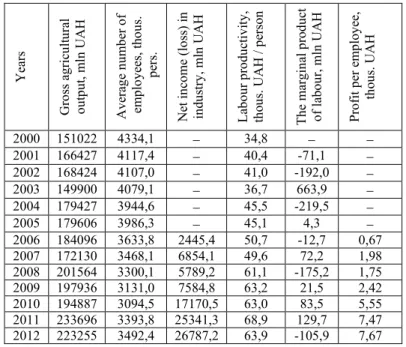Resource potential of ukrainian agricultural sector and its implementation
Texto
Imagem


Documentos relacionados
The probability of attending school four our group of interest in this region increased by 6.5 percentage points after the expansion of the Bolsa Família program in 2007 and
The revival of the small business sector has not only been influenced by the level of economic activity and the dynamics of entry and exit into the market, but also by its
The two points considered at the alternate sides, of the tangents through the diameter of the circle, and then the line joining these points divides the circle
The structure of the remelting zone of the steel C90 steel be- fore conventional tempering consitute cells, dendritic cells, sur- rounded with the cementite, inside of
social assistance. The protection of jobs within some enterprises, cooperatives, forms of economical associations, constitute an efficient social policy, totally different from
Do cruzamento de diversos pontos entre esses eixos, cinco combinações que definem os estilos de liderança emergem: (1,1) ou gerência empobrecida, que combina baixa
Ao Dr Oliver Duenisch pelos contatos feitos e orientação de língua estrangeira Ao Dr Agenor Maccari pela ajuda na viabilização da área do experimento de campo Ao Dr Rudi Arno
Uma das explicações para a não utilização dos recursos do Fundo foi devido ao processo de reconstrução dos países europeus, e devido ao grande fluxo de capitais no